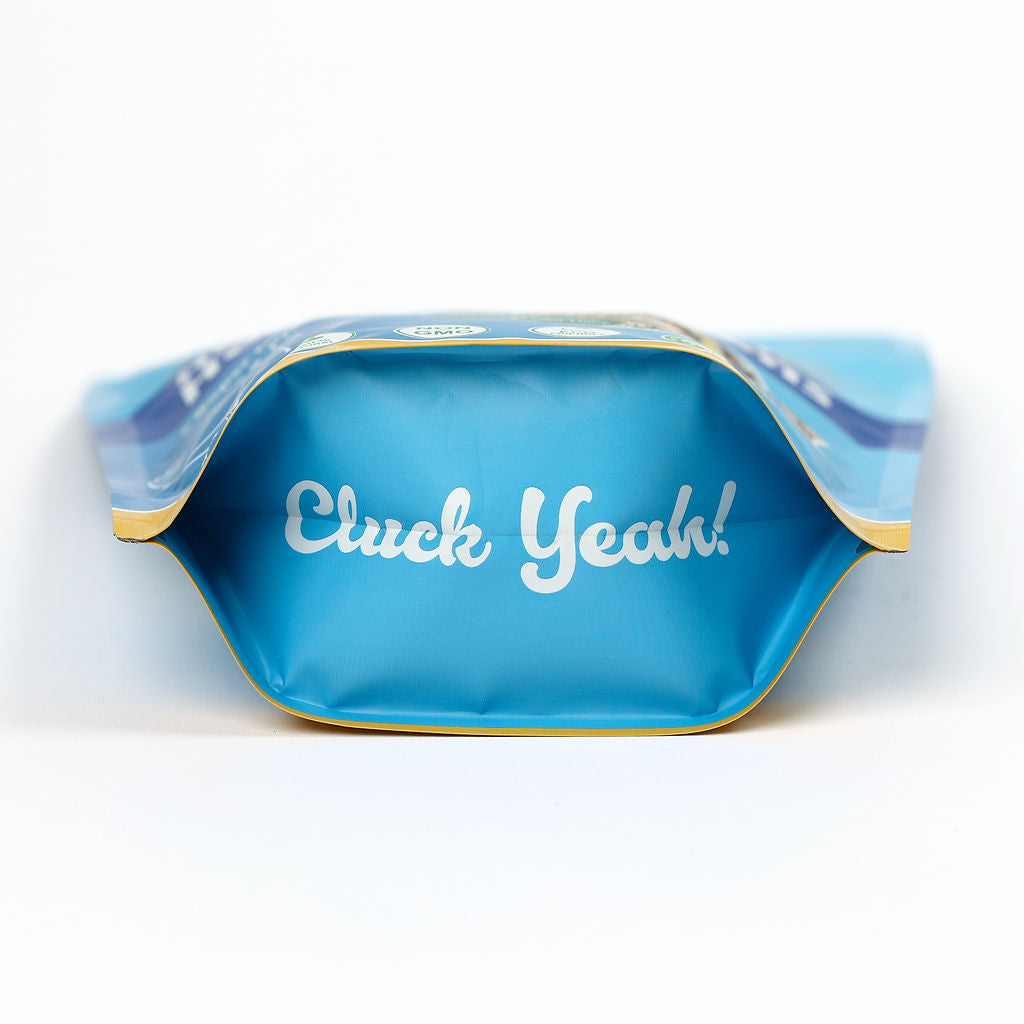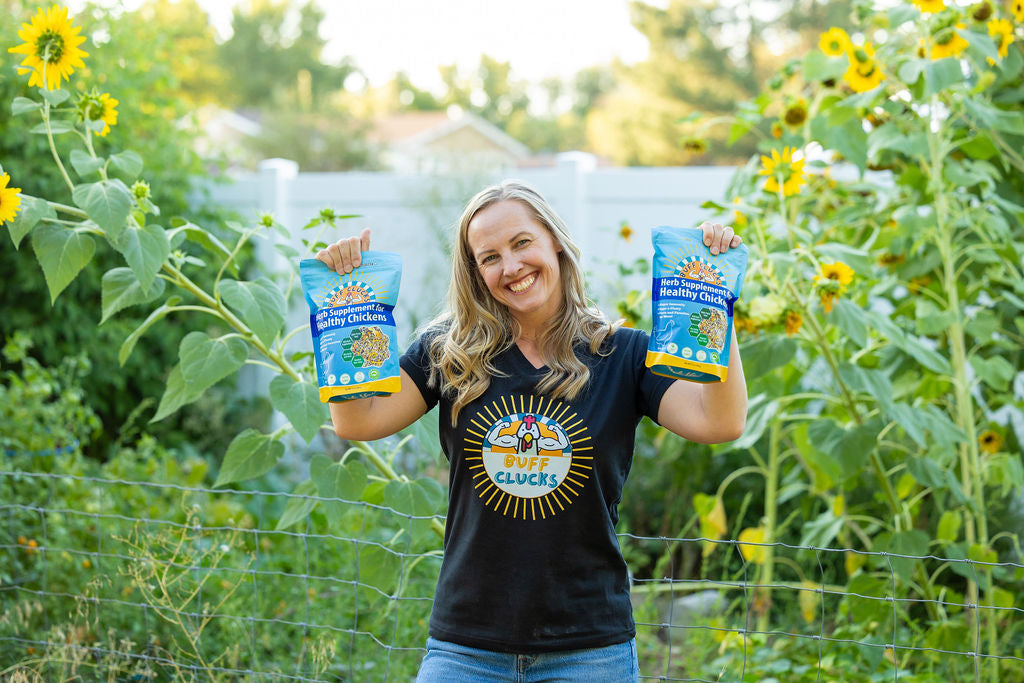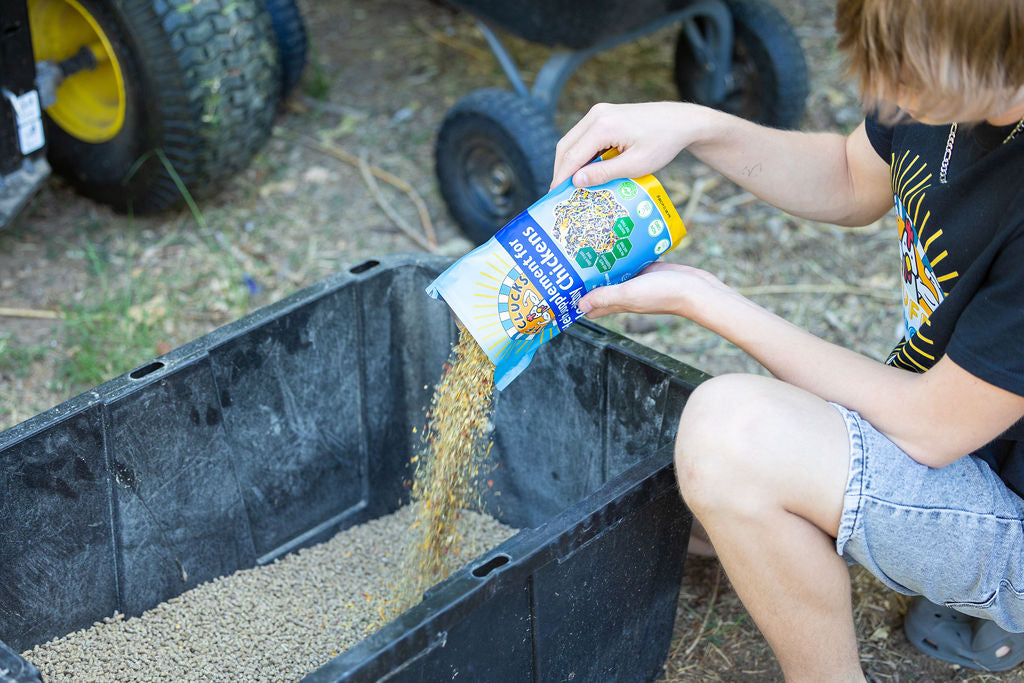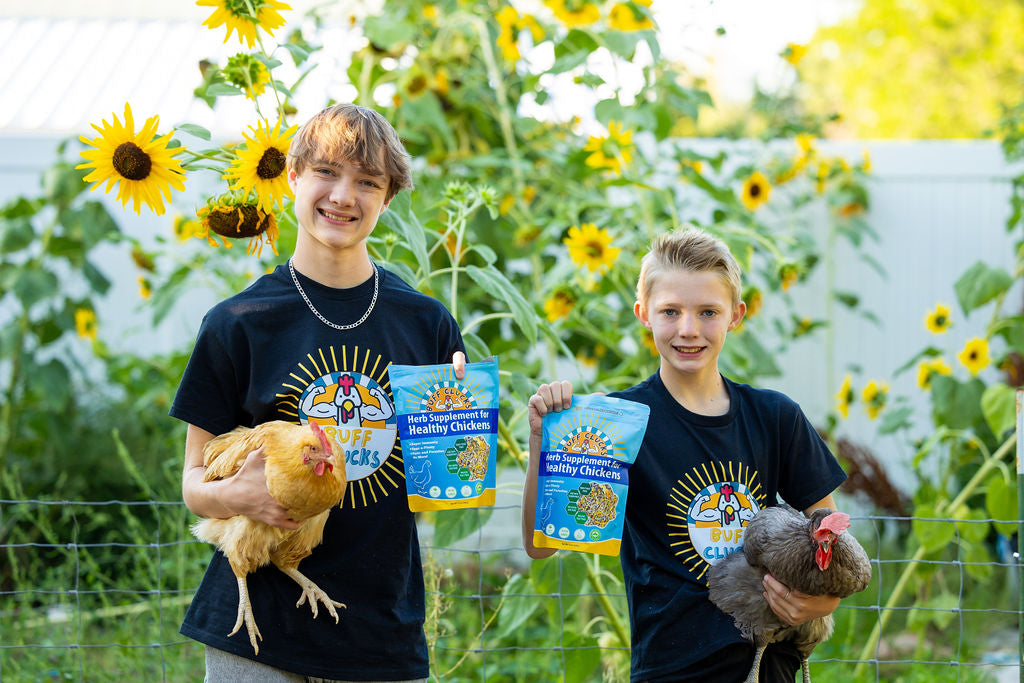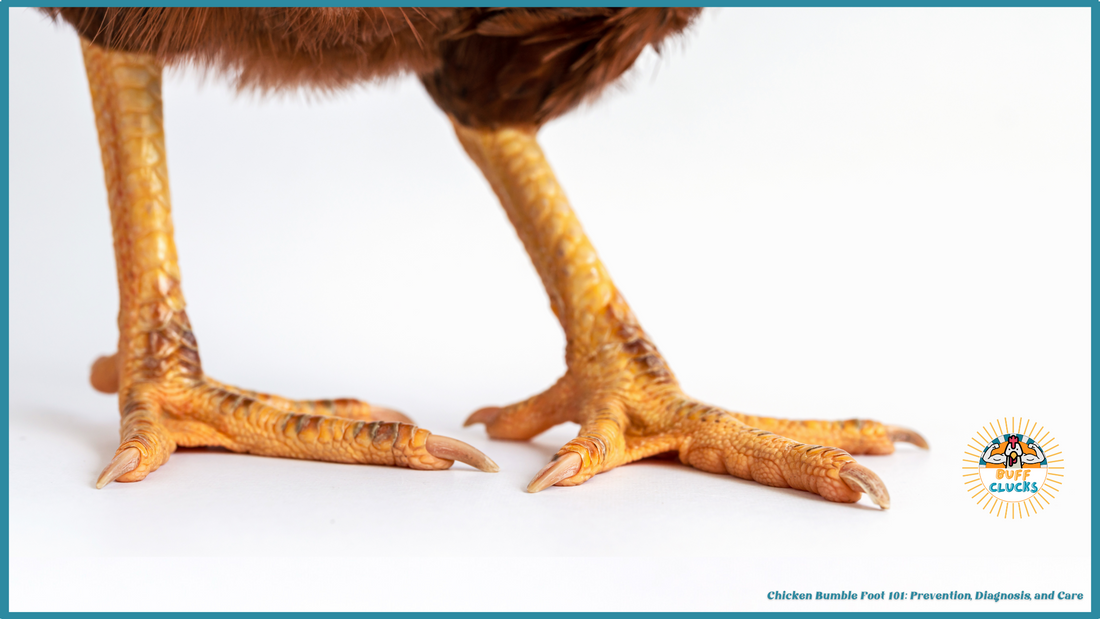
Chicken Bumble Foot 101: Prevention, Diagnosis, and Care
Share
It’s time to talk about one of our coop’s more perplexing problems: bumble foot in chickens. Yes, that clumsy-sounding condition that’s anything but a laughing matter for our precious peckers. But don’t be chicken! In this guide, we’re breaking down the what, why, and how of bumble foot.
What Exactly is Bumble Foot?
Imagine if your chicken’s foot felt like it was constantly stepping on a Lego, a painful, inflamed mess that turns even the happiest hen into a bit of a grump. Bumble foot, medically known as pododermatitis, occurs when a chicken’s foot becomes inflamed, often from prolonged contact with damp, unsanitary surfaces.
While bumble foot can be caused by several factors, it’s not just about the physical environment. Overweight chickens, poor nutrition, and even genetic predispositions can contribute to the problem. When your chickens start limping or showing signs of discomfort, it might be time to investigate if bumble foot is ruffling their feathers.
How to Spot the Signs Of Bumble Foot
Early diagnosis is the golden egg for preventing more severe complications. Here are some signs your chicken might be suffering from bumble foot:
-
Swollen, red foot pads — This is the classic sign. If your chicken’s foot looks puffier than a freshly baked soufflé, it might be time for some extra TLC.
-
Limping or reluctance to walk — When your chickens start to shuffle around more like they’re in a slow-motion parade, it’s a sign that something isn’t quite right.
-
Sores or scabs on the feet — These pesky lesions can develop if the condition worsens, potentially inviting infections.
-
Decreased egg production — Ailing chickens may not feel like laying their usual bounty of eggs, and that’s a big red flag in any backyard coop.
If you notice any of these symptoms, it’s essential to act fast. Early intervention can prevent a minor foot fumble from turning into a full-blown bumble.

Keeping Your Coop on Its Toes
Preventing bumble foot starts with creating a safe, clean, and comfortable environment for your flock. Here’s how to ensure your coop is the ultimate chicken penthouse:
Maintain a Clean and Dry Coop
Chickens love a bit of dirt when foraging, but constant exposure to wet, unsanitary conditions can spell disaster for their delicate feet. Regularly clean your coop and replace bedding to reduce moisture. A dry floor means fewer chances for bacteria to party on your chickens’ paws.
For added protection, consider dusting your coop floor with natural products. Our very own CoopShield—Diatomaceous Earth and Herbs for Chickens is perfect for absorbing excess moisture while gently warding off pesky pests. It’s like giving your coop a spa day, with a twist!
Upgrade Your Perches and Flooring
Rough, abrasive surfaces can irritate the delicate skin on your chicken’s feet. Ensure your perches are smooth and, if possible, padded with materials that reduce pressure points. Also, avoid building roosts too high; keeping them under 18 inches minimizes the impact when chickens jump down, reducing the risk of foot injuries that can lead to bumble foot. A soft landing for those little feet not only prevents bumble foot but also makes your chickens feel like they’re strutting on clouds.
Fowl Harmony to Prevent Bumble Foot
When your chickens are busy bickering, they tend to use their feet as weapons, increasing the risk of injuries that can lead to bumble foot. Encouraging a calm, friendly environment helps prevent those high-impact altercations, keeping your birds free from cuts, pecking sores, and other foot-related issues.

Diet
A balanced diet isn’t just for boosting egg production, it also plays a pivotal role in maintaining healthy skin and tissue. Ensure your chickens are getting the nutrients they need to keep their immune systems in top-notch shape. A little secret? Adding natural herbs to their diet can work wonders.
That’s why many savvy chicken keepers swear by our Herb Supplement For Backyard Chickens. This blend is chock-full of natural goodies designed to support your chickens’ overall health, including their delicate feet. It’s the kind of supplement that really puts the “coop” in cooperation!
Exercise
Just like us, chickens need their daily dose of movement to keep their bodies in top shape. Regular exercise builds muscle, boosts circulation, and helps maintain a lean physique, critical because overweight chickens are especially susceptible to bumble foot, as extra weight puts more strain on their feet, increasing the risk of bruising and swelling. Encourage ample space for strutting, scratching, and dust bathing to keep those feet strong and your flock clucking happily.
Preen and Prune
Keeping your flock well-groomed is more than just a beauty routine, it’s a vital step in preventing foot injuries. Regularly tidying up stray feathers (and their pointy quills) helps avoid accidental punctures, while trimming overgrown talons minimizes the chance of debris lodging between the nail and skin.

When to Call in the Experts
While many cases of bumble foot can be managed at home with some extra care and a dash of natural remedies, there are times when you might need to wing it and call in a vet. If you notice:
-
Persistent swelling or sores that don’t improve within a week or two
-
Signs of infection, such as pus
-
Your chicken becoming unusually lethargic
-
Stops eating
it’s time to consult a professional. Remember, early diagnosis can prevent the condition from worsening and ensure that your flock remains happy and healthy.
Treatment For Bumble Foot
If bumble foot has already made its unwelcome debut in your coop, don’t lose hope! Here are some practical steps to help your chickens get back on their feet—literally.
1. Clean and Disinfect the Foot
Begin by preparing a warm water soak with a pinch of Epsom salt to gently cleanse your chicken’s foot. This soothing bath not only helps reduce inflammation but can also calm your chicken. Consider wrapping your chicken in a towel for extra comfort. Gently clean the foot to remove dirt and debris.
2. Wound Care for Bumble Foot
While natural remedies are great for soothing inflamed skin, sometimes you need a more hands-on approach to treating bumblefoot. When you spot those pesky plugs, start by allowing them to soften for about 10 minutes. Then, carefully flip your chicken to get a clear view, and using tweezers, gently remove each plug.
If they’re still stubborn, a bit more soaking will do the trick. Once the plugs are out, clean the area with a chlorhexidine solution and apply a triple antibiotic cream to prevent infection. Finally, cover the wound with a sterile pad and wrap the foot gently to promote healing from the inside out.
3. Create a Healing Environment
Set up a designated “chicken recovery zone” within your coop. This area should have soft bedding and be free from rough surfaces. Encouraging your chicken to rest can accelerate the healing process, as it reduces pressure on the affected foot.
4. Monitor and Modify
Keep a close eye on your chicken’s progress. If you notice any deterioration or signs of infection, it might be necessary to re-evaluate the treatment plan. Sometimes a little tweak, like switching bedding materials or revisiting the diet, can make a world of difference.





